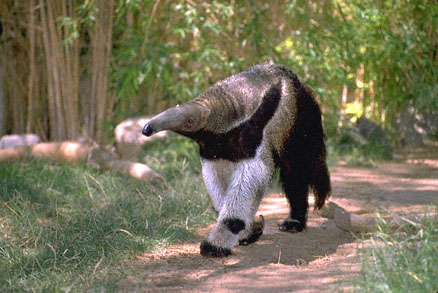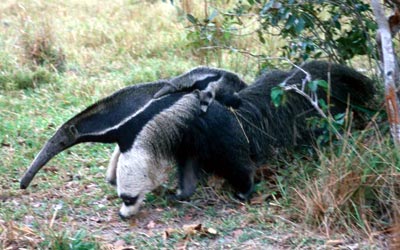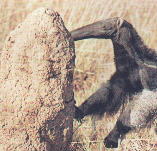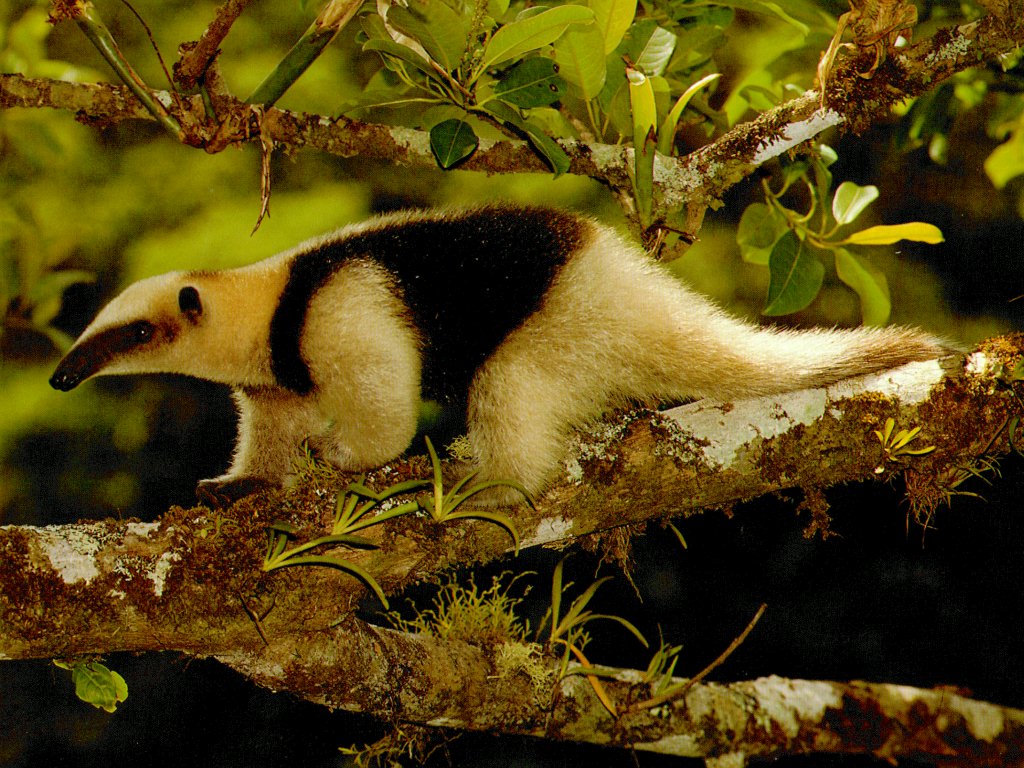
Giant Anteater - Photo Courtesy of the University of Michigan

Giant Anteater with Baby - Photo Courtesy of Brazilian Adventure Travel
Giant Anteater at Phoenix Zoo - Photo by Tom Irvine
Giant anteater - myrmecophaga
tridactyla. Also known as the ant-bear.
Order - Edentata - comprised of mammals including
tree sloths, anteaters, and armadillos. Family - Myrmecophagidae
Giant anteaters range throughout most of tropical America from northern Argentina to Guatemala and Honduras. Anteaters live in tropical savannas and forests of these regions.
 |
The anteater has
an elongated snout. The sticky substance of its tongue traps insects.
It eats up to 30,000 ants, termites and other insects each day.
|
Anteaters seldom spend more than a couple of minutes feeding at any one nest. Only a few thousand insects are removed at one feeding and then the nest is abandoned to repairs. The anteaters circulate around their territories, feeding lightly here and there, never destroying any one nest and, therefore, never eliminating any of their food base. Termites and ants recover losses very rapidly.
